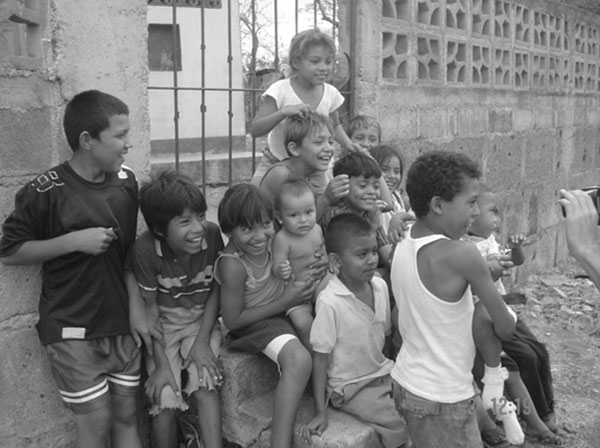

Latin America and the Caribbean
 |
 |
| International
Strategy for Disaster Reduction Latin America and the Caribbean |
Newsletter
ISDR Inform - Latin America and the Caribbean |
 |
|
Editorial
|
Is a different vision required after a challenging year? In the Americas, as in other regions of the World, 2005 was a year full of surprises, and not necessarily agreeable ones. Thousands of people are dead and millions more have been affected by disasters of different sorts. Developing countries have suffered enormous economic losses, as have countries with the greatest buying power. While it may well be true that a good deal of damage has been caused by disasters in years past and that few places on the planet have been immune, the tsunami in the Indian ocean at the end of 2004, the earthquake in Pakistan, and the devastating tropical storms in Central America, Mexico, and the United States, could lead one to think that this past year was out of the ordinary. Objectively speaking, however, a more thorough examination of what happened this past year, coupled with careful observation of the trends of previous years might lead us to the question of whether we really ought to be surprised. It is true that no one expected such an intense hurricane season in our region. While experts had predicted an above average level of activity, they never imagined that there would be a record-breaking number of tropical storms. The unprecedented number of hurricanes in 2005 has generated a lot of questions as to the reasons behind these recent disasters in the region. There are some people who assert that the recent deaths and damage related to tropical storms and hurricanes are due to global warming. However, we must be careful in our interpretation of what has occurred since, even if there are indications pointing to global climate changes, that in no way suggests that recent events are attributable to those changes. Indeed, we know with a great deal of certainty that natural disasters have impacted the region in the past, bringing with them incalculable damage. Earth is a living planet with its own natural cycles that for millions of years have manifested themselves inexorably and will most certainly continue to do so for millions of years to come.
|
|
 |
|
Tropical storms occur in long and short cycles that are part of natural climate variability. Historically, precipitation levels and the number and force of hydro-meteorological events have followed cyclical patterns and it would appear that much for the current variability can be attributed to these natural cycles. It may also be the case that global climate change—still impossible to quantify—also has an influence in the sense that a larger proportion of tropical storms achieve higher degrees of intensity. Nonetheless, the reality is that this debate is far from being settled and we still do not know what the long term effects of climatic change will be. In this sense, in the years to come, adaptation to climate change will be an issue that will receive substantial attention from many different organizations; undoubtedly it will be an important issue not only in Central America and the Caribbean, but in many other parts of the world as well. The past year has demonstrated that the vulnerability of communities in many parts of the region (and throughout the world) is a crucial area that must receive more attention from governments and international organizations. This is true for more economically solvent countries as well as for developing countries. In short, the recent disasters remind us that vulnerability to disasters has by no means been resolved and that retoric is insufficient to bring about significant changes in this regard. While joint efforts
have led to a significant progress in the area of disaster reduction
in recent years, ongoing conditions in Latin America and the Caribbean
still lead to increased vulnerability. Deficient regulatory policy
in a number of areas, the current characteristics of urban management
in many areas, problem in environmental resource management, and persistent
social inequity in many population centers are factors that force large
sectors of society to live in poverty, and in ecologically fragile
and degraded areas. For this reason, so long as the situation does
not improve, in all likelihood we will continue to see the cyclical
occurrence of disasters. Clearly, efforts to bring about change, raise awareness, and strengthen institutional ties, would benefit from easier access to technical, scientific, and other types of information on disaster reduction. This means facilitating access to information so as to contribute to the development of innovative approaches that help foster a broader culture of prevention. It will also be critical to think about developing new models for early warning systems, always keeping in mind the importance of designing and implementing them in keeping with the local reality, wherewithal, and conditions. Of course, while the development of new technologies can be very promising and helpful for disaster prevention and mitigation, it is rarely the only, or even the most important, aspect of a solution. The only way to create durable, realistic solutions is by adopting a more holistic vision.
|
|
 |
|
In this context, such platforms can be conceived of as a national mechanism: a dynamic process that can take the shape of a forum, network, or committee, with multi-sectoral and interdisciplinary representation devoted to promoting a disaster reduction agenda in a particular country. Among the strategic objectives identified in the Hyogo Framework for Action 2005-2015: Building the Resilience of Nations and Communities to Disasters is “the development and strengthening of institutions, mechanisms and capacities at all levels, in particular at the community level, that can systematically contribute to building resilience to hazards.” In the same vein, the Framework appeals to nations to “support the creation and strengthening of national integrated disaster risk reduction mechanisms, such as multi-sectoral national platforms.”
|
|
|
| © UN/ISDR |